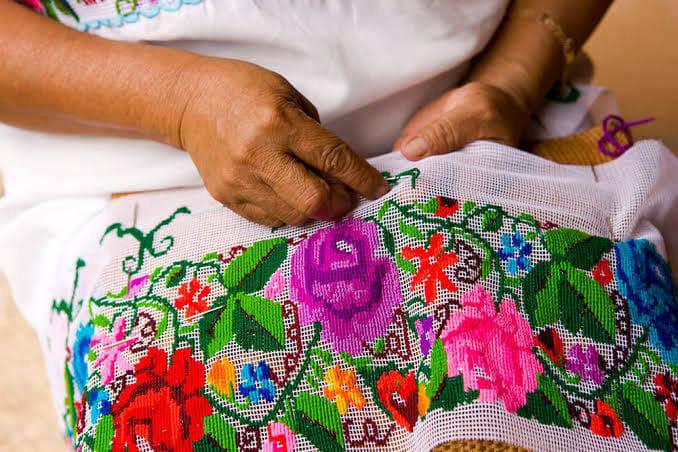Yucatecan embroidery and the artisan technique known as Xokbil Chuuy or cross stitch, were elevated to the Intangible Cultural Heritage of Yucatán.
In the ordinary session of the plenary session of the Congress of Yucatán, on Monday, March 18, the legislators unanimously approved the opinion of the Art and Culture Commission declaring Yucatecan embroidery as an Intangible Cultural Heritage of Yucatán, which is an artisanal technique that has given identity to the state over the years.
Representative Melba Gamboa Ávila said that the embroidery that has been part of Yucatecan culture for years is honored.
Legislator Eduardo Sobrino Sierra stated that, by approving the initiative, institutions are allowed to carry out actions to decorate this ancient practice.
In the Mayan community of San José Oriente, in the municipality of Hoctún, embroidery is a tradition and practically an emblem of this town. The local women are dedicated to embroidery and proudly wear traditional clothing every day.
In the K’aan Lool indigenous school, which in the Mayan language means “Yellow Flower”, they created books embroidered with this ancestral technique, to preserve the identity and its
Angel May, director and teacher of the K’aan Lol indigenous school, was based on the traditional work that mothers do in Yucatán.
“I started to question what mothers do daily. Well, they sew, they do the cross stitch and since I have observed that they create the design of their huipil, I said well, I can easily ask them to design the content of some books for me.”
Letters, colors, animals, and even Van Gogh’s starry night are the illustrations that mothers and children have captured in these embroidered books, which seek to make children feel proud of their roots, maintain cultural identity, and preserve the Mayan embroidery that Today it is already Intangible Cultural Heritage of the state.
Although there are various techniques, the most used are cross stitch, satin, and chuy cab. Embroidery dates back to pre-Hispanic times and in archaeological areas such as Chichén Itzá, vestiges have been found that show the ancestral practice of these embroideries, which today continue to be transmitted from generation to generation.
TYT Newsroom


